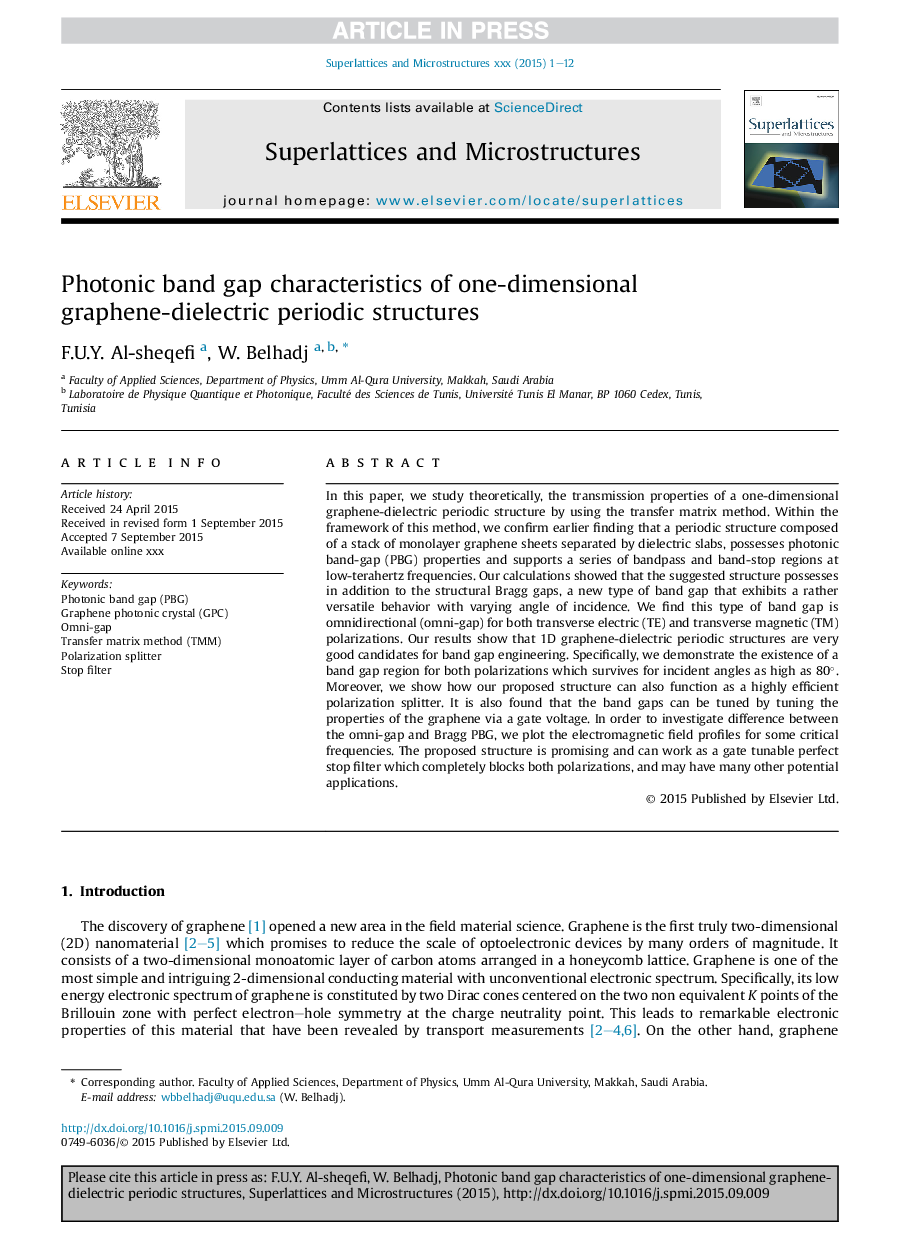| Article ID | Journal | Published Year | Pages | File Type |
|---|---|---|---|---|
| 7942055 | Superlattices and Microstructures | 2015 | 12 Pages |
Abstract
In this paper, we study theoretically, the transmission properties of a one-dimensional graphene-dielectric periodic structure by using the transfer matrix method. Within the framework of this method, we confirm earlier finding that a periodic structure composed of a stack of monolayer graphene sheets separated by dielectric slabs, possesses photonic band-gap (PBG) properties and supports a series of bandpass and band-stop regions at low-terahertz frequencies. Our calculations showed that the suggested structure possesses in addition to the structural Bragg gaps, a new type of band gap that exhibits a rather versatile behavior with varying angle of incidence. We find this type of band gap is omnidirectional (omni-gap) for both transverse electric (TE) and transverse magnetic (TM) polarizations. Our results show that 1D graphene-dielectric periodic structures are very good candidates for band gap engineering. Specifically, we demonstrate the existence of a band gap region for both polarizations which survives for incident angles as high as 80°. Moreover, we show how our proposed structure can also function as a highly efficient polarization splitter. It is also found that the band gaps can be tuned by tuning the properties of the graphene via a gate voltage. In order to investigate difference between the omni-gap and Bragg PBG, we plot the electromagnetic field profiles for some critical frequencies. The proposed structure is promising and can work as a gate tunable perfect stop filter which completely blocks both polarizations, and may have many other potential applications.
Related Topics
Physical Sciences and Engineering
Materials Science
Electronic, Optical and Magnetic Materials
Authors
F.U.Y. Al-sheqefi, W. Belhadj,
